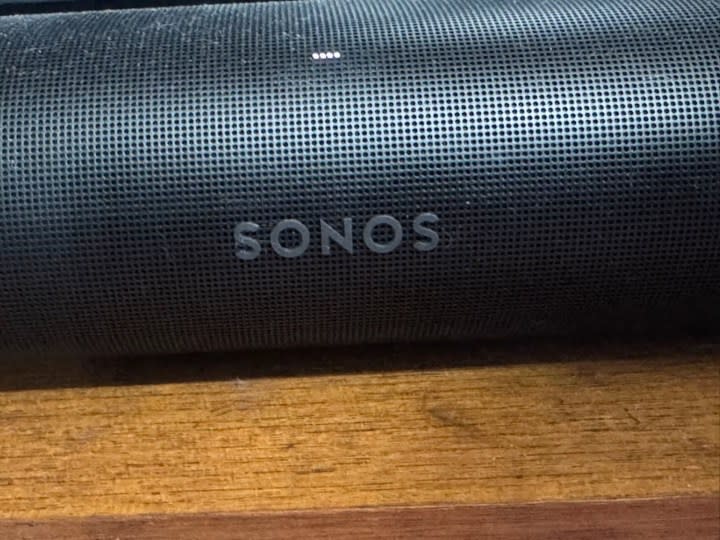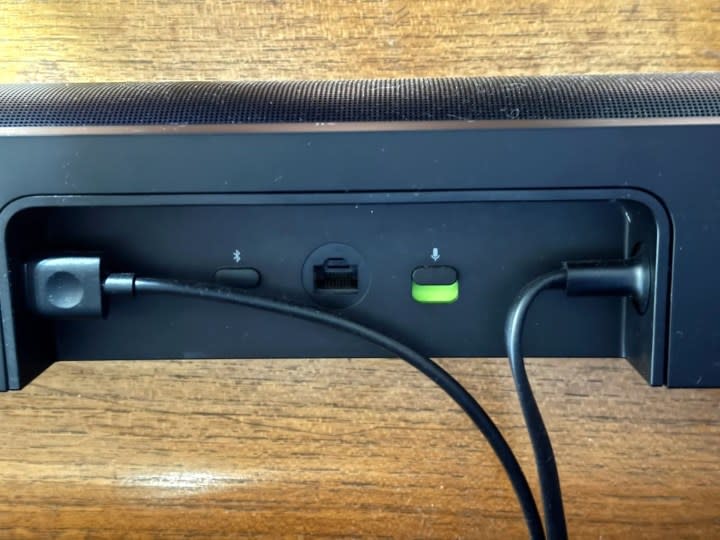Can a new soundbar fix Sonos’ self-inflicted wounds?

Sonos is prepping a new soundbar code-named Lasso, according to report from The Verge. If the accompanying leaked pics from an apparent beta tester are any indication, it’s going to be a spruced-up version of the existing Sonos Arc, with built-in Bluetooth and new driver technology courtesy of Mayht, a Netherlands-based startup that Sonos purchased in 2022. Those drivers, which are said to be more efficient than traditional designs, may also be more expensive to produce. This has led to speculation that the Lasso could cost as much as $1,200. (The existing Sonos Arc sells for $899.)
Ordinarily, news of an upcoming Sonos product generates a lot of positive buzz for the company as fans eagerly contemplate their next upgrade. At the moment, however, the atmosphere surrounding the company is anything but enthusiastic. Earlier this year, Sonos released a major revamp of its app intended — according to company spokespeople — to improve ease of access to users’ favorite music and enhance discoverability.

Unfortunately, the new design has proven to be a significant departure from the previous version in terms of usability. Many key activities — such as finding a currently playing speaker from a list of speakers — have been rearranged and require a learning curve. Worse yet, when the new app launched, users discovered that previously available features were no longer available, like alarms, timers, access to personal libraries, and song queue management. On top of these functional concerns, many Sonos customers noticed that their systems had simply become unreliable or, in a few cases, totally unusable.
Since the initial launch of the new design on May 7, Sonos has issued frequent updates and many of the feature omissions have been restored. But using a Sonos system is still a lot less enjoyable than it used to be. Stability problems remain and customers are still finding their way around the app, unconvinced that the new design is actually an improvement over the previous version.
Meanwhile – millions of loyal Sonos customers still can’t use their systems fully because of the latest app you forced on us.
I was going to buy the Ace – but will now buy the Air Pod Max as I can trust Apple to fix issues.
— Dr Von Steiner (@DrVonSteiner1) July 10, 2024
I’m confident that Sonos eventually will fix all of the remaining glitches and bugs. But over the two months since the redesign launched, Sonos appears to have squandered what was once one of the most loyal customer bases in the consumer tech world. Yesterday, I noticed a Sonos ad on X (previously Twitter) touting its new wireless headphones, the Sonos Ace. The Ace has been widely praised in spite of Sonos’ continuing app problems, and yet responses to the ad were filled with anger and disappointment.
@sonos you destroyed your customer base for these? Your reputation is in tatters and your show loyal customers nothing but utter contempt just so you can release something that none of us want! #boycottsonos
— Phill Hicks (@philliphicks20) July 11, 2024
“Fix your app before trying sell new products,” wrote one user. “You really need to focus on winning back current customers.” This was a common sentiment, though others weren’t afraid to be more blunt, making it clear that they had no interest in buying new Sonos gear: “Wouldn’t touch Sonos with a baseball bat after their recent screw up,” wrote another user. “I was going to buy the Ace — but will now buy the Air Pod Max as I can trust Apple to fix issues.”
Other than a general expression of irritation at Sonos, the comments also reflect a more dangerous sentiment for the future hopes of any brand: betrayal. It doesn’t happen often, but when a company falls out of sync with its customers due to a poorly executed product or service, the ramifications can be dire.
Microsoft learned this the hard way when, after amassing a huge number of loyal gamers to it Xbox product line (the Xbox 360 sold 84 million units despite regular reports of the dreaded Red Ring of Death), it announced that its next console, the Xbox One, would require both an internet connection and the use of a Microsoft Kinect accessory. Reaction to the news was swift and brutal, ultimately forcing Microsoft to change its strategy before the Xbox One had even hit stores. Still, the fallout cast a long shadow over the Xbox One, which sold far fewer units (just 58 million) than the 360, and lost Microsoft a lot of customers who defected over to Sony and its very popular PlayStation 4. It took years and the eventual creation of Xbox Game Pass to win gamers back.
Sonos may not have quite as much to fear from its gaffe as Microsoft did. Unlike game consoles, which see refresh cycles of about four years, many Sonos customers have owned their wireless speakers for a decade or longer. Audio tech simply doesn’t change as rapidly as gaming tech. Moreover, each Sonos product that customers have added to their systems has deepened their investment in the company’s ecosystem. Switching to another company’s speakers could involve thousands of dollars and considerable effort.
Still, this investment may have limits and soundbars are the one type of speaker where ecosystem loyalty can often take a back seat to other considerations. We currently have a full Sonos home theater setup in our basement family room: A Sonos Arc, Sonos Sub, and a pair of Sonos Era 300 speakers acting as surrounds. It sounds amazing. I have recommended it to many friends, family members, and readers like yourself.
I have reviewed many other soundbar systems that sounded as good or better, at comparable prices. But because we have Sonos speakers in every other room in the house, it just made sense to go with Sonos for TV sound as well. This could be the next soundbar’s Achilles’ heel. If Sonos can’t rid its software of major bugs once and for all — and soon — it will become much harder to recommend the Lasso even if it represents a significant step up in sound quality from the Sonos Arc.
A soundbar’s primary mission is to deliver top-notch TV audio and dialogue for shows, movies, and sports. Having it connected to the rest of your wireless speakers is a nice-to-have, not a need-to-have. With Sonos’ software in its current state, no one needs to buy the company’s next soundbar.


